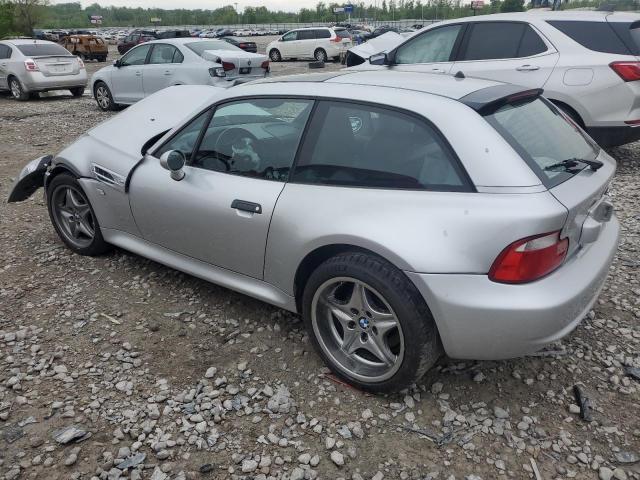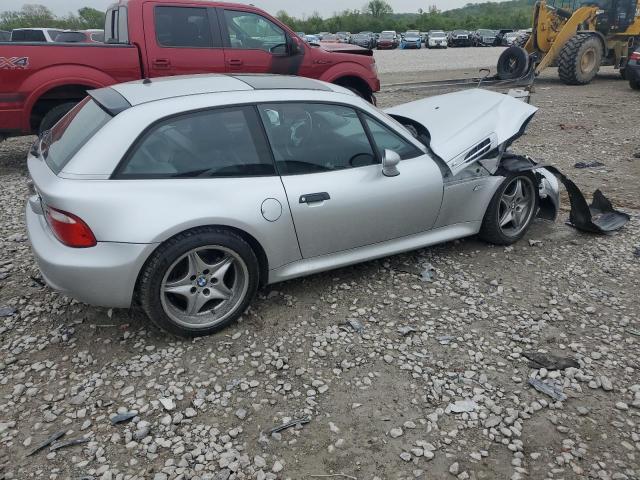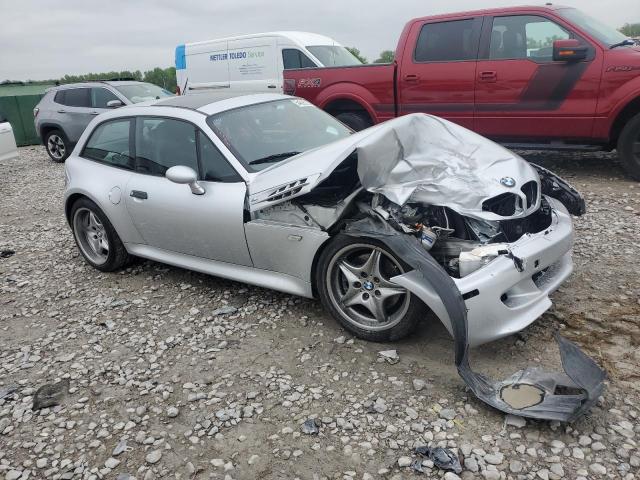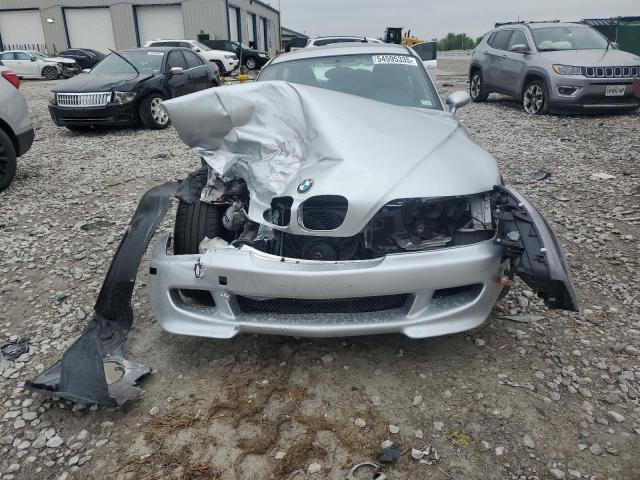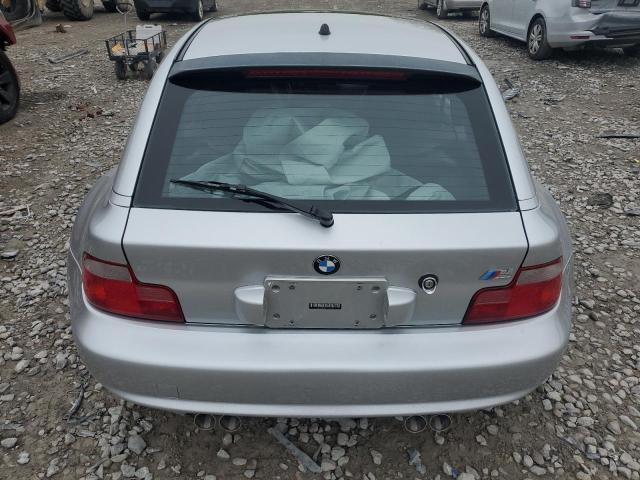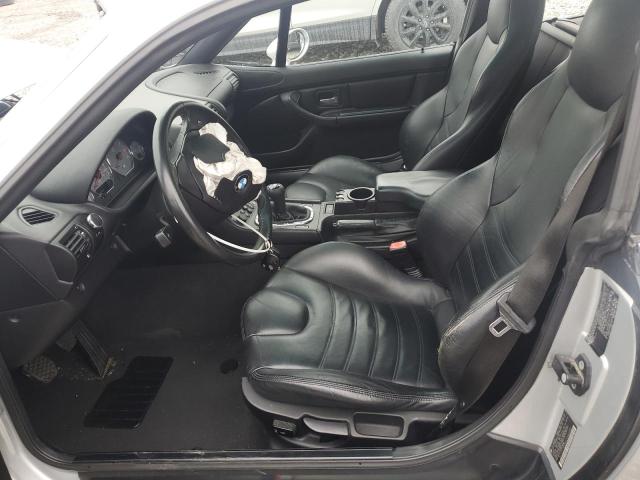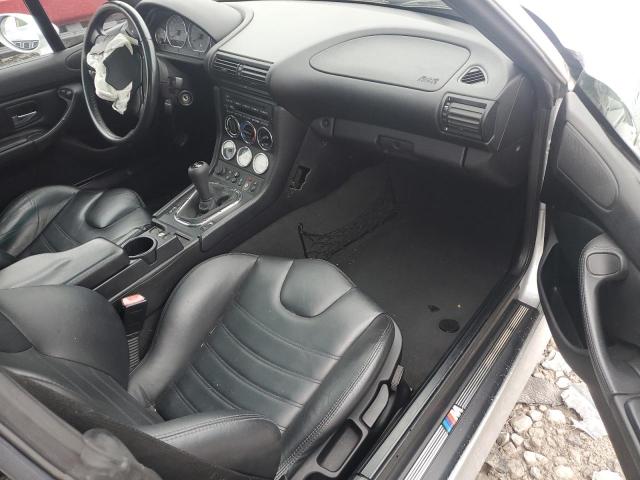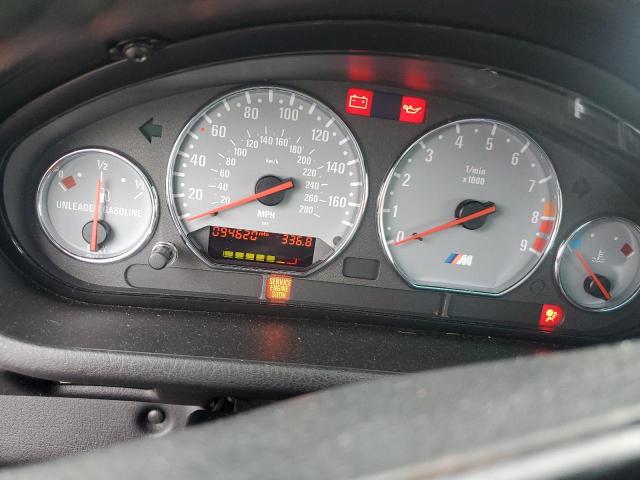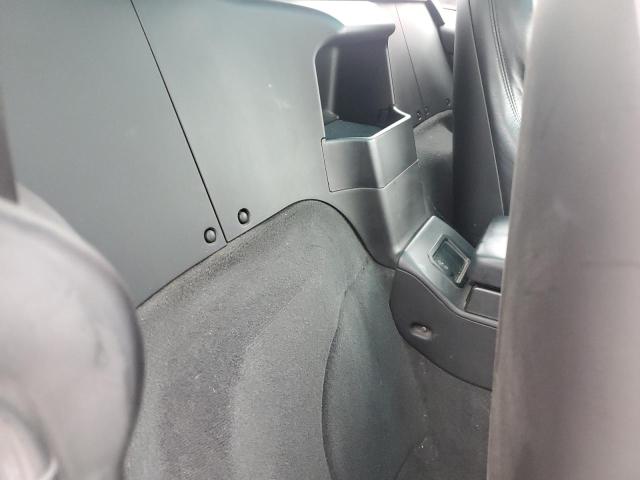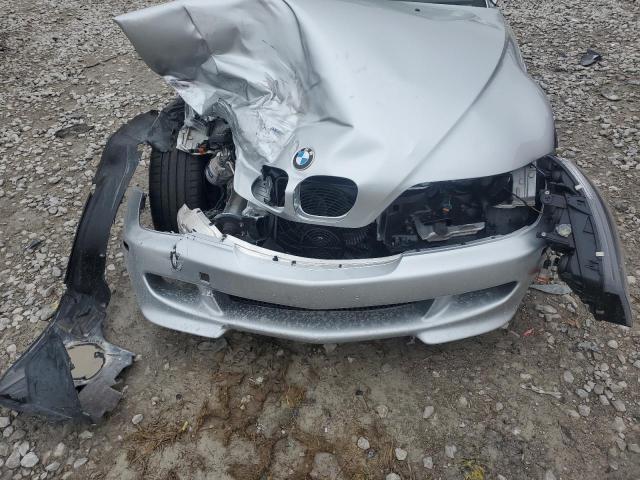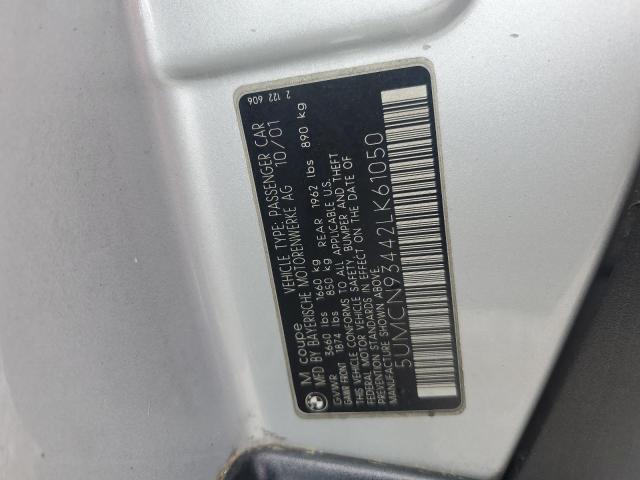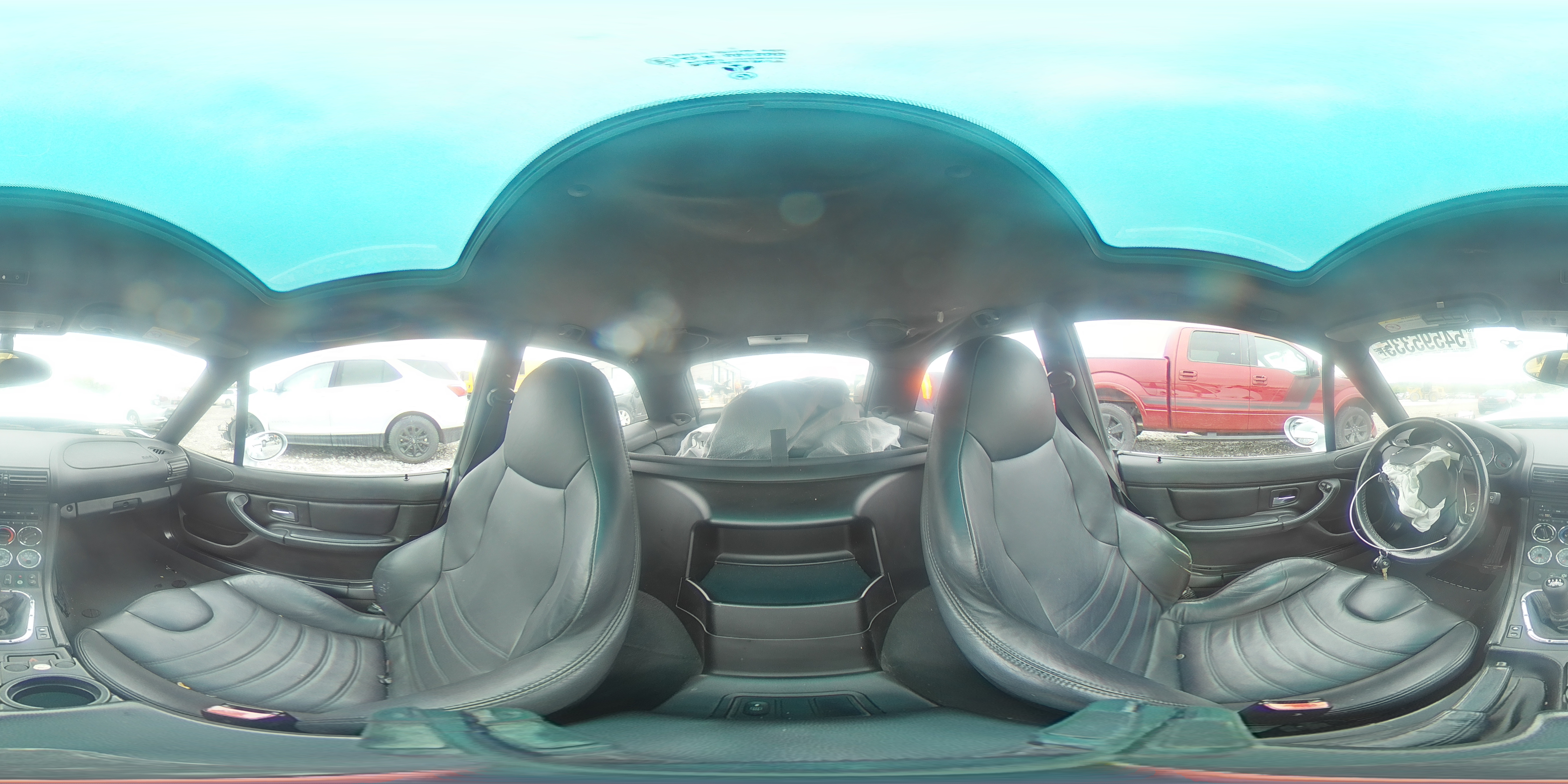2002 BMW Z3 | 5UMCN93442LK61050
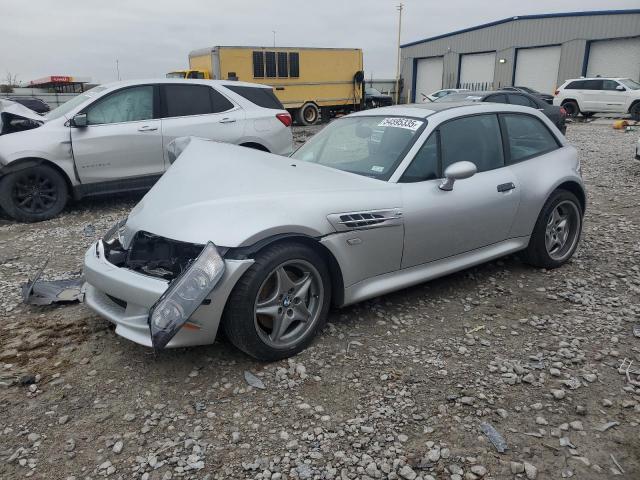 ❯
❯Lot details
- Sale Date16/Jun/2025
- Lot Number54595335
- ACV$45,000
- Location
- Odometer94,620 miles (152,276 km)
- Primary Damage:FRONT END
- Secondary DamageSIDE
Vehicle specifications
6
~$50,000
Engine: 3.2L naturally aspirated inline-6
Torque: 365 Nm
0–100 km/h: ~4.9 s
The Z3 M Coupe equipped with the legendary S54 inline-six from the E46 M3 represented the pinnacle of performance in the Z3 range. Producing 325 hp and 365 Nm of torque, it propelled the lightweight shooting brake from 0 to 100 km/h in under 5 seconds. With a close-ratio 5-speed manual transmission and a limited-slip differential as standard, the car delivered raw, linear power with a metallic soundtrack that invited high-rev driving.
Handling was as unfiltered as the performance. Built on the compact E36/8 chassis with rear semi-trailing arms, the Z3 M Coupe was famously lively and tail-happy at the limit, rewarding skilled drivers with sharp turn-in and a direct feel. The coupe’s added structural rigidity over the roadster significantly improved chassis feedback and control through fast corners. Wide rear tires, a low seating position, and hydraulic steering ensured that every input was immediate and analog. The suspension was firmer than the standard Z3’s, and M-specific components provided precision worthy of the ///M badge.
The Z3 as a whole had a dual character. The standard models with inline-fours or smaller six-cylinders offered a relaxed, wind-in-the-hair experience, especially in roadster form. But the M variants—particularly the S54-powered M Coupe—delivered a uniquely visceral blend of speed, heritage, and driving purity. With its unconventional styling and uncompromising setup, the Z3 M Coupe is now revered as one of BMW M’s rawest, most characterful creations.
Final Bid BMW Z3 (2002)
$13,700
$13,700
$13,700
Body Styles
The BMW Z3 was available in two distinct body styles: a two-door convertible roadster and a two-door shooting brake-style coupe. The roadster, introduced in 1996, featured classic long-hood, short-deck proportions, exposed rear fenders, and a simple manually operated soft-top, later joined by a power top option. It was compact and minimalist, evoking classic British and Italian open-top sports cars, but with German engineering and rear-wheel drive.
In 1998, the Z3 Coupe was introduced, built on the same chassis but with a fixed roof and unique rear end. Its design was polarizing: a long hood transitioned into an abruptly sloped roofline and a hatchback rear, earning it nicknames like “clown shoe.” However, this shape resulted in dramatically improved torsional rigidity and a rare combination of sportscar handling with cargo practicality. The Coupe shared all of the Z3’s front-end styling but stood apart visually and dynamically.
Model Name Meaning (Manufacturer)
“Z” stands for “Zukunft,” the German word for “future,” a designation BMW used for its line of two-seat sports cars. The number “3” indicated the car’s relative position in the lineup, corresponding to its use of 3 Series architecture and engines. The Z3 was the first modern mass-production Z model and helped pave the way for successors like the Z4 and Z8.
Body & Interior Colors and Rims
The BMW Z3 was offered in a wide array of body colors over its lifespan, ranging from classic tones like Arctic Silver and Alpine White to more exotic hues such as Estoril Blue, Dakar Yellow, Imola Red, and Phoenix Yellow (on later M models). The M Coupe and M Roadster were often finished in unique colors like Laguna Seca Blue, Cosmos Black, or Steel Grey, with optional metallic or high-gloss finishes. The coupe’s wide rear fenders and dual exhaust tips were highlighted by these bold shades, reinforcing its performance intentions.
Interiors varied widely depending on trim and body style. Standard Z3s offered leather or leatherette upholstery in Beige, Black, Tanin Red, or Oregon Green, with contrasting trim options like wood or brushed aluminum. M models featured signature two-tone color schemes such as Estoril Blue/Black or Laguna Seca Blue/Black, with sport seats, ///M steering wheels, and stitched shift boots. Dashboards in M versions often had chrome-ringed gauges and oil temperature dials, absent from the standard Z3.
Wheels ranged from 15-inch alloy wheels on early four-cylinder models to 17-inch M Double Spoke Style 40s on M variants. Roadsters typically came with multi-spoke or radial designs, while the M Coupe featured aggressive five-spoke alloys with a staggered setup and polished finishes. Some markets also offered forged lightweight wheels and exclusive center cap designs with the M logo.
Top Expensive Options
- M Coupe Package with S54 Engine (post-2001): $5,900
- Two-Tone Leather M Sport Interior: $1,500
- Harman Kardon Premium Audio System: $875
- Heated Sports Seats with Adjustable Thigh Support: $500
- Power Soft Top with Defrosted Rear Glass: $1,050
- Limited-Slip Differential (standard on M): $0
- Metallic Paint (Imola Red, Estoril Blue): $475
- Chrome Line Interior Trim: $375
- CD Navigation with Trunk-Mounted Display: $1,300
- Forged M Wheels with Performance Tires: $1,200
vs Competitors
In its era, the BMW Z3 faced off against the Mercedes SLK, Audi TT, and Porsche Boxster. Compared to the SLK, the Z3 felt more connected and purist, especially in non-automatic form. Against the TT, the BMW was rawer, lighter, and more rear-biased in dynamics, though less refined in cabin tech. The Porsche Boxster offered better balance and steering feel, but the Z3 M Coupe delivered greater torque and exclusivity. What truly set the Z3 apart was its emotional range—from elegant weekend cruiser in 1.9 and 2.8-liter roadsters, to visceral collector’s item in the S54 M Coupe. It avoided conformity, and that alone gave it lasting cult status.
Fun Fact
The Z3 Coupe and M Coupe were built in BMW’s Spartanburg, South Carolina plant and developed largely as a skunkworks project by a group of passionate engineers who believed the roadster’s chassis deserved a more rigid platform. At first unpopular due to its unconventional styling, the M Coupe is now considered one of the most collectible BMWs of the 1990s and early 2000s—especially in S54 form, with fewer than 700 units sold in North America.


